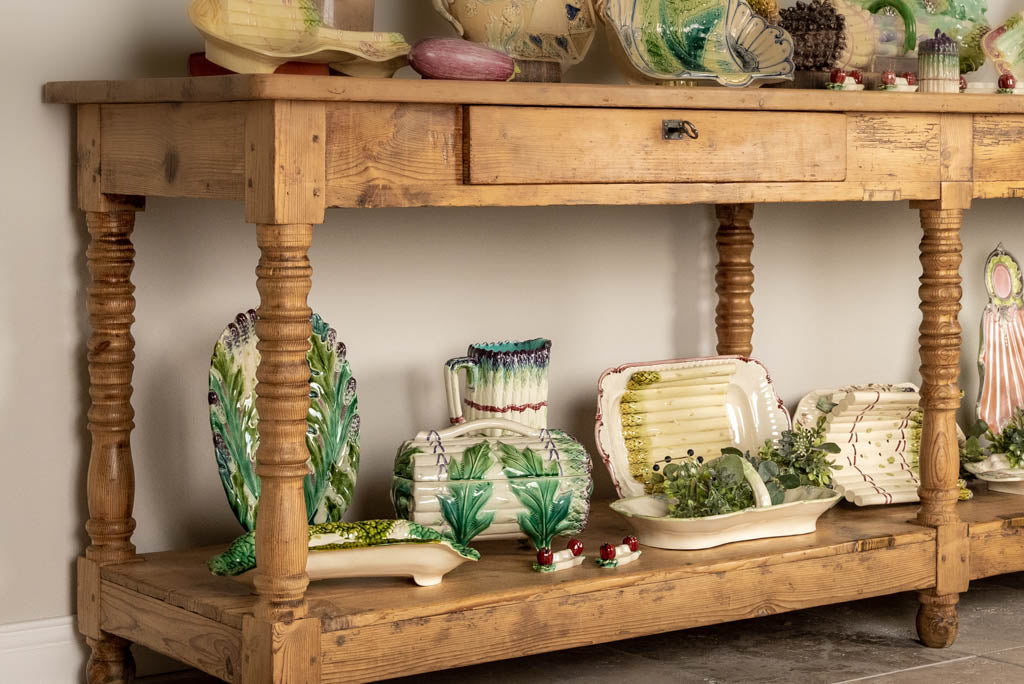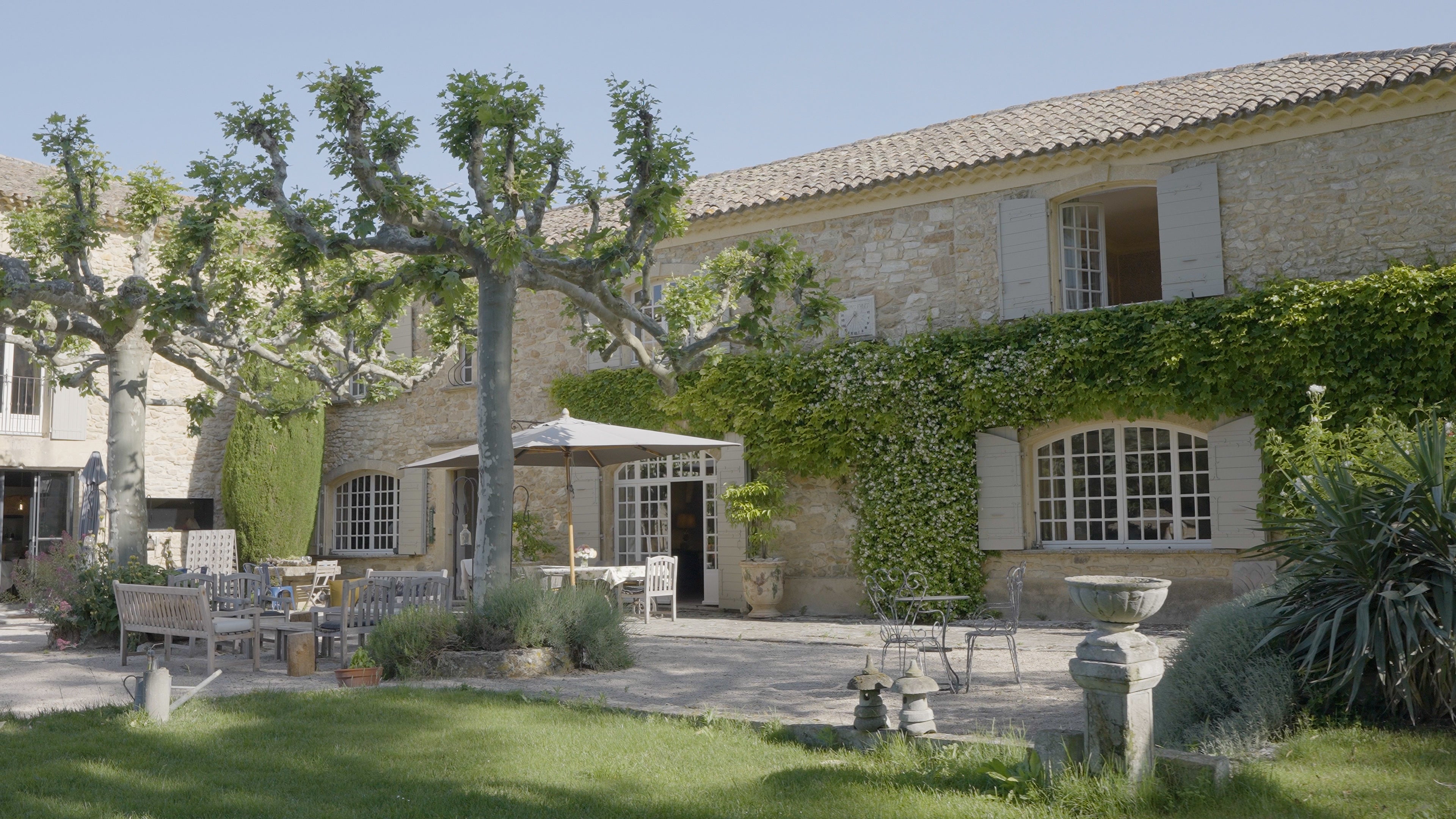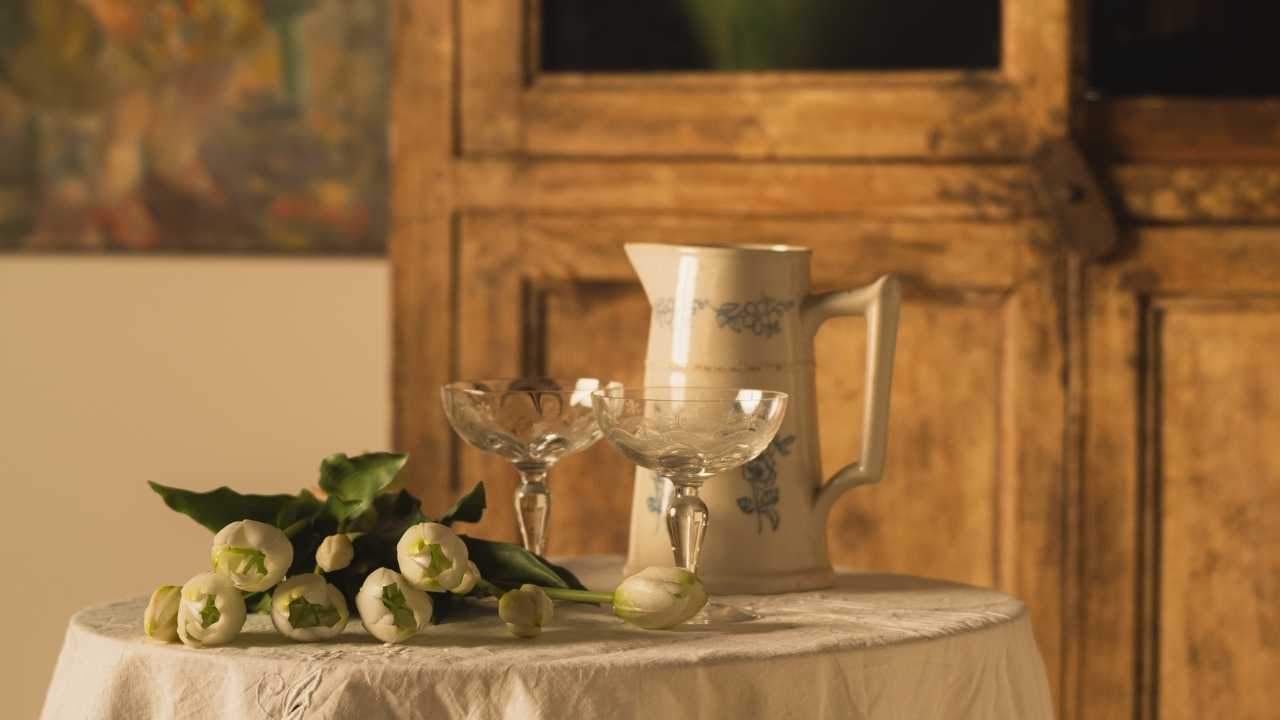
Majolica and Barbotine - colorful, collectible & naturalistic
Historical Majolica
Majolica, priorly known as Maiolica, is a tin-glazed pottery that dates from the 15th century. Although it has influences from many other countries, it originated from Italy in cities such as Faenza, Urbino, and Florence. This ceramic style was first inspired by Hispano-Moresque ware, a similar tin-glazed style of earthenware from Spain, which made its way to Italy from the Spanish island of Majorca, or Maiolica. However, unlike the Hispano-Moresque ware, which was usually neutral colored with cobalt blue designs, Italian maiolica was often multicolored in cobalt blue, yellow, iron red, green, and purple. For the most part, maiolica gained popularity in the 15th and 16th century, and some variation of the ceramic technique has remained popular ever since!

Today, the most sought-after Majolica products can sell for many thousands of dollars, especially Victorian English majolica ceramics from companies such as Minton, Wedgwood, Whieldon, and George Jones, an apprentice of Minton's. In fact, Herbert Minton, the English potter, was the one who coined the term majolica to describe these new ceramics inspired by Italian maiolica. In the Great Exhibition in 1851, (London’s exhibition of industrial works from all over the world,) Minton first displayed his ceramic works, sparking the majolica mania of the next century. The companies that successfully followed Minton were renowned in the late nineteenth century and are now highly collectable. For example, a pair of Minton garden seats could sell for as much as $60,000 today.
So, what does majolica look like?
Collectors love Majolica because of the seemingly endless styles, varieties, and colors to find. In the photos below, we showcase a few examples from the Chez Pluie collection.
Majolica often uses animal, floral, and vegetal designs, like asparagus, cabbage, artichokes, primroses, pineapples, and strawberry blossoms, to name a few.
Ceramicists like Minton and Wedgwood made an incredible variety of products, from sculptures to vases to just about every kind of dish you could think of.
Herbert Minton’s majolica, for example, showed artistic influence from Europe to Asia, and stylistic impressions from Gothic to Renaissance. In fact, the Minton shape books (containing Minton's pottery models,) report over five thousand different ceramic designs. Similarly, Wedgwood, a rival to Minton, was artistically inspired by a variety of cultures and motifs, including historical and mythological figures, and of course lots of natural imagery and colors.

French majolica, or barbotine
Antique asparagus majolica pitcher dating from the 19th century.
Vintage mustard pot from the mid-twentieth century, with its original spoon!
During the rising production of barbotine, asparagus became one of the most popular foods in Western Europe. This was due to the industrial revolution, which allowed the middle-class access to foods previously only accessible to the wealthy. And so began the production of asparagus pitchers, platters, serving cradles, plates, and just about anything you can think of!
Furthermore, French barbotine offered new colors, like deep red, teal, and brown, (rare in their English and American competitors’ products,) which further increased its popularity and spread the aesthetic to other countries, such as Portugal.
Decorating with Majolica
Here are a few ideas on how to use majolica to decorate your interior spaces:
- Display them as a collection.
- Set the table with majolica!
- Use majolica to decorate for the season.
Majolica Displays
We're delighted to present some of our favorites from the Chez Pluie majolica collection as well!
Shop This Look:
We have some incredible pieces in this collection, including lots of platters, serving cradles, pitchers, and bowls. Here are just a few of our favorites!

Fan-shaped platter from the early-20th century
In the foreground at left above is a beautiful antique asparagus platter, and the two pieces behind comprise a set - a lidded asparagus majolica serving bowl and platter, dating from the 1890's. In the foreground at left are two of a set of six knife rests. And in the top right is an asparagus-themed pitcher. All are available now at Chez Pluie.
Pictured in the foreground above is an exquisite pastel-toned asparagus cradle from the early-20th century. Standing behind is a beautiful platter with an asparagus motif from Sarreguemines and the early-20th century. This barbotine platter is decorated with light green asparagus and a red /pink acanthus leaf border. Both pieces were held in the same private collection for over fifty years, but are available for individual purchase. They would be a delight to look at together or separately in a kitchen or dining room.

Setting the Table with Majolica
You can also use your majolica collection for beautiful table settings! The great thing about using majolica to set the table, or even to use in the kitchen, is that you get to use the ceramics in a functional way as opposed to just for display. Consider incorporating majolica pieces into your daily life, like serving drinks in majolica pitchers and setting the table with majolica dishes.
Below are a few items we've chosen out of the Chez Pluie majolica collection that we think would complement a beautiful table setting:
Pictured above left is a vibrant turquoise sauceboat, dating from the late nineteenth century, (around 1880) decorated with asparagus and artichoke motifs. The bottom is stamped Majolique Luneville. Behind is a wonderful oval platter from the late-19th to early-20th century most likely from the Luneville faience.
In the foreground at left are two of the set of six knife rests. In the center is a darling asparagus-themed basket and at back left a beautiful richly-colored cradle in brilliant turquoise, white, purple, green, orange, and red from the early 20th century. All are available now at Chez Pluie.
Summery tables: Majolica and Seasonal Décor
The variety of colors and motifs of majolica also make them perfect for decorating seasonally! As you’ve probably noted from the photos, leafy green patterns are particularly popular in majolica and barbotine, and make perfect décor for summertime.Items like these beautiful leafy plates and dishes can be easily incorporated into spring and summer collections and table settings. Below we've added a few of our favorite barbotine items here at Chez Pluie which we think would be perfect for a spring or summer tablescape or decorative scheme for the kitchen or dining room:
Pictured above is an exquisite sculptural majolica plate dates from the late nineteenth century. It is decorated with crisp-looking apples on a branch. Likely made by the Longchamp Faience in Burgundy. This would look fabulous displayed on the wall or in a vitrine.
Cabbage leaf and asparagus sauce boat from the late-19th to early-20th century
Pictured at above left is an antique Majolica sauceboat with a divine artichoke design. Directly behind is a stunning platter with violet-blue fig motifs around the border and chamfered edges. It has subtle decoration on the flat section and is a rare find.

Ceramics glazed with vibrant purple, turquoise, and brown such as the footed platter above and cradle below would look beautiful on a summer table setting and bring a cooling and refreshing atmosphere on a hot day.
Beautiful fan shaped asparagus cradle, strainer, and platter from the mid-20th century
Majolica and Barbotine - Frequently Asked Questions
-
How is majolica made?
Majolica is made with a tin-glaze process, giving an opaque white finish to otherwise red or brown earthenware items. The process is simple: dip, dry, paint, and fire! After the earthenware is fired, it’s dipped in tin glaze, painted with colored metal oxide glazes and then the majolica is fired to create the final sparkling surface.
-
Is majolica expensive?
The price of majolica can vary greatly depending on the age, size, and rarity of the piece. Antique majolica, (especially the ones made by famous ceramicists like Minton and Wedgwood,) or rare pieces can sell for thousands of dollars. In 2005, a piece called “St. George and the Dragon” made by renowned ceramicist Bernard Palissy, was sold for around 2.3 million dollars. However, most pieces, especially contemporary majolica, is thankfully much more affordable!
-
How is majolica different from other types of ceramics?
Majolica is mainly different from other pottery because of its vibrant coloring and naturalistic motifs in relief, or relievo, meaning raised, textured design (not two-dimensional). The relief designs are often painted in bright contrasting colors, making them even more striking. The color palette of majolica is very diverse, but commonly includes rich blues, greens, oranges, and yellows.
-
How should I care for my majolica pieces?
So that you don’t damage the glaze, clean your majolica with a mild soap and a soft cloth or sponge. Avoid rough brushes and chemical cleaners! Also, try to avoid serving acidic and staining foods on your majolica pieces, since they also may damage the glaze. Finally, for the most part majolica should be kept indoors, as few pieces are durable enough to withstand weather and temperature changes without being damaged.
-
Where can I find majolica to purchase?
Majolica can often be found in antique shops and pottery stores, as well as through auctions and vendors online, like Chez Pluie! You are welcome to browse the entire Chez Pluie antique majolica collection. 
Thank you for taking the time to explore the world of majolica pottery with us! We hope reading this article was enlightening and inspiring, as majolica is truly such a versatile and interesting art form with a rich history. We sincerely appreciate your readership and hope you get the chance to browse through our majolica collection to bring some ceramic charm into your own interiors! Chez Pluie Majolica Collection.
For more information on majolica, see these references:
Britannica. “Majolica.” Encyclopædia Britannica, 20 July 1998, www.britannica.com/art/majolica.
Churchill, Alexandra. “What Is Majolica Pottery?” Martha Stewart, 3 June 2021, www.marthastewart.com/8114412/majolica-pottery-collecting-guide.
Karmason, Marilyn G., and Joan B. Stacke. Majolica: A Complete History and Illustrated Survey. Harry N. Abrams, 2002.
“Secret Life of Antiques: French Majolica I.” French Garden House, 14 Aug. 2015, frenchgardenhouse.com/blog/secret-life-of-antiques-french-majolica-i/.
Simpson, Richard V. Antiques & Collecting Magazine Vol. 107, Iss. 2, (Apr 2002) : 38-41+






















Leave a comment
This site is protected by hCaptcha and the hCaptcha Privacy Policy and Terms of Service apply.